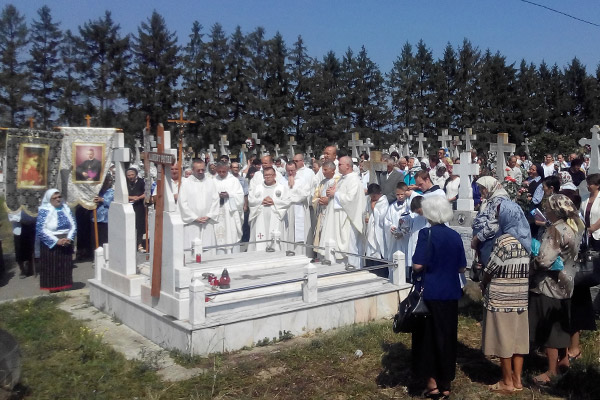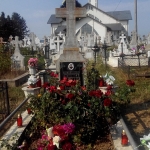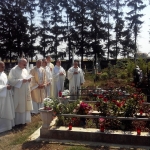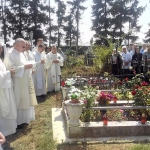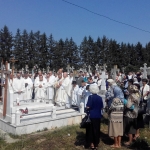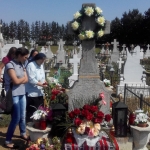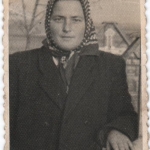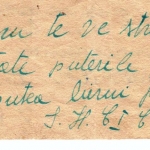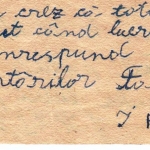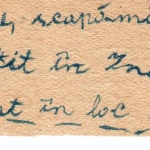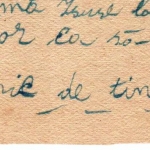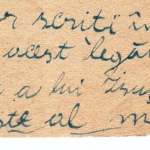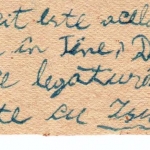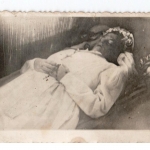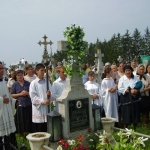On January 26, 2018, the Holy Father Francis held an audience with His Eminence, Angelo Cardinal AMATO, S.D.B., Prefect of the Congregation for the Causes of Saints.
During the audience, the Supreme Pontiff authorized the Congregation to promulgate the Decree concerning the martyrdom of Servant of God Veronica, ANTAL. Veronica, a member of the Secular Franciscan Order, was born on December 7, 1935, in Nisiporeşti, Romania. She was killed in hatred of the Faith on August 24, 1958, in Hălăuceşti, Romania.
Her cause was begun in 2003, in the Diocese of Iaşi, by the Province of St. Joseph in Romania of the Friars Minor Conventual. This effort was led by the Province’s then Vice-Postulator and later external collaborator and Postulator General, Friar Damian PĂTRAŞCU.
Veronica owed her religious education to her grandmother, Serafina. Since Veronica’s parents were working in the fields most of the time, it was up to the elderly woman to take care of her grandchildren’s faith and judging by the fruits of her labors, one can only rejoice with her. At the same time, she taught Veronica how to work hard and was already giving her small jobs when she was only four. Therefore, when Veronica was seven, it was not too tiring to work with her parents in the fields and still regularly attend elementary school. This early preparation and an increased sensitivity were the only special traits of the child, who was otherwise no different from the rest of her companions. Her mother had even started raising funds for Veronica’s dowry, to which Veronica contributed with her sewing work. All of this predicted that marriage was part of the plan (or at least that is what her mother hoped for), even though small signs of Veronica’s particular predisposition towards spiritual matters would not be long in coming.
When Veronica was 16 or 17 years old, her religious vocation suddenly took wing and she desired to enter a convent of Franciscan nuns in the nearby village of Hălăuceşti. To say that her mother was less than enthusiastic would be an understatement. Her motherly heart offered every possible objection, but this only had the effect of strengthening Veronica’s desire for religious life. Nevertheless, Veronica would also have to contend with the socio-political climate Romania was subjected to as a Soviet satellite. State imposed atheism meant closure for religious congregations. Veronica understood that all this would, at the very least, end up delaying the fulfillment of her desire. She therefore “adapted” and was content to cultivate her own vocation, with a cloistered lifestyle, within the walls of her house. She set up a small room inside for her to contemplate and pray. In the meantime, she became the very soul of the pastoral life in her parish. She taught catechism, led the choir and visited the sick—just as any nun would do. Some, in fact, called her a nun and it did not displease her at all, for that was how she lived and dressed. She enrolled in the Franciscan Third Order and later joined Father Kolbe’s Militia of the Immaculate. Finally, she professed her own private vow of chastity. Her spirituality became robust; she was nourished by the Eucharist and illuminated by the Rosary. Every morning, she traveled eight kilometers to the church in Hălăuceşti, where she arrived before dawn with a group of friends to attend daily Mass.
Unfortunately, she was alone on the evening of August 24, 1958. As she was returning from the same church, where she worked so hard and where the Sacrament of Confirmation had been administered earlier that afternoon, a young man from the countryside attacked her as she passed a corn field. He tried in vain to rape her (as her autopsy attested) and ended up stabbing her forty-two times. Right around that time, Veronica had been reading the biography of Maria Goretti (canonized only a few years before) and had confided to two friends that she too would behave like that. “I belong to Jesus and Jesus is mine,” she wrote on a piece of paper. She preferred remaining faithful to Him until death.
Friar Damian PĂTRAŞCU, Postulator General






